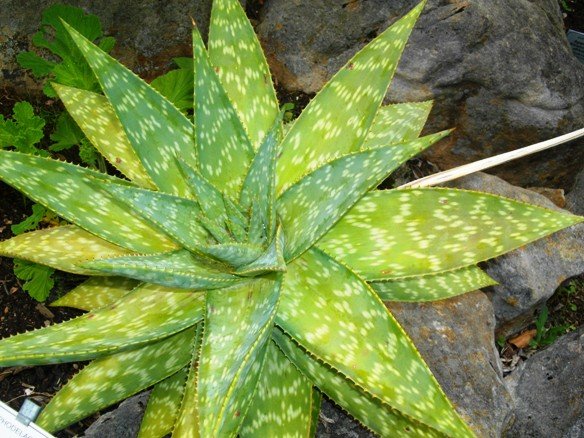Aloe maculata rosette

Author: Ivan Lätti
Photographer: Ivan Lätti
Aloe maculata is named for its leaf spots. The specific name, maculata, is a Latin word meaning spotted or blotched, referred to the leaf spots. There is, however, a large variety of low growing or stemless, spotted aloes in South Africa that are sometimes hard to distinguish. A. maculata is thought to be one of the easier ones to identify from its fellow spotted species, due to the flat-topped racemes and uniformly coloured flowers. For some time this plant used to be known as A. saponaria, which brought about the common name of common soap aloe.
The leaves are thick and succulent, triangular and spotted all over. Marginal teeth are sharp and brown with no spines on the leaf surfaces. The leaf tips are usually dry and twisted with exceptions caused by the availability of semi-shade and ample water.
The plant in picture is a case in point, growing in the Kirstenbosch National Botanical Garden. Flower colour varies from yellow, orange and red to pink. Flowering time varies to coincide with the dry season (summer in the Cape, late winter in the north-eastern parts). Plants are mainly stemless, but not always. They grow solitary or form clumps through suckering (Smith, et al, 2017; Van Wyk and Smith, 2003; Jeppe, 1969; iNaturalist).

